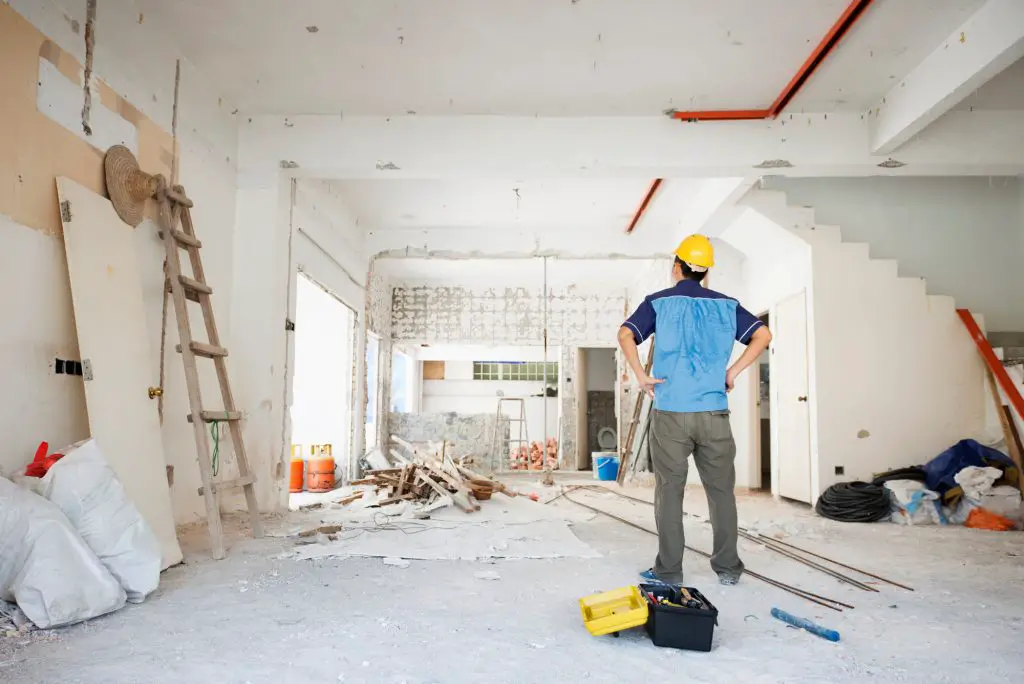Revamping an old home is akin to diving into the pages of history. These structures are narratives of times gone by, their walls bearing witness to different eras, trends, and lifestyles. However, transforming such a house brimming with character and charm into a modern sanctuary involves a delicate balance. It’s all about integrating contemporary comforts without sacrificing the historical integrity that makes the home so unique. Here’s what to consider before embarking on this journey:

1. Asbestos Removal
Initially, asbestos was popular in construction due to its heat resistance and durability. However, nowadays, it’s associated with numerous health problems, including lung diseases and cancer. In old buildings, asbestos may lurk in insulation, roofing, floor, etc. The health risks occur when remodeling work disturbs these materials, releasing airborne asbestos fibers which can be easily inhaled. Preparing for asbestos removal, therefore, is essential.
Consider hiring a professional asbestos inspection team. These trained experts can assess your home, locate potential asbestos-containing materials, and advise on safe removal procedures.
Remember, asbestos removal isn’t a do-it-yourself task. It demands specific tools, rigorous safety measures, and strict state and federal regulations compliance. So, ensure you enlist the services of certified professionals to handle this delicate work. Prioritizing asbestos removal at the beginning of your project guarantees a safer remodeling process and a healthier future living space.
2. Historical Significance Of Your Old Home
Appreciating the historical significance of an old house is a crucial aspect of the remodeling process. Each older home is a trove of history, with its unique story woven into the fabric of its structure.
Take time to identify the architectural elements that charm the house. It could be original hardwood flooring, decorative moldings, ornate fireplaces, or vintage doors and windows. These unique details enrich the property and often possess an irreplaceable allure.
Before commencing renovation, research your home’s period. Understand the architectural style and the typical materials used at that time. This knowledge will assist you in making informed decisions about what to preserve, restore, or replicate, maintaining the essence of the house’s historical integrity. Your modernized home will then strike an elegant balance between the past’s charm and the present’s conveniences.
3. The Structural Integrity
Probing the structural integrity is a critical initial step when revamping an old home. The structure is the backbone of a house, offering support and stability. Over time, this ‘backbone’ might show wear and tear that could affect your renovation plans.
A structural assessment should include a thorough check for issues like foundation cracks, sagging roofs, or warped floors. Age can also bring about termite damage or wood rot, which might undermine the house’s stability.
Engage a certified structural engineer for this assessment. These professionals have the know-how to identify potential problems and propose viable solutions. Addressing these structural issues early ensures the safety and longevity of your renovated home.

4. Electrical And Plumbing Systems
Aged homes frequently come with outdated electrical and plumbing systems. These pose many challenges during the remodeling process, as they may not meet the demands of modern appliances and fixtures and can also pose safety risks.
Old wiring might not comply with current codes for electrical systems and could heighten the risk of electrical fires. Likewise, outdated plumbing systems could harbor lead piping, corrosion, or inefficient water heaters.
Before commencing your renovation, hire a professional electrician and plumber for a comprehensive assessment. These experts can identify potential hazards, recommend necessary upgrades, and ensure your renovated home is equipped with safe, efficient, and modern systems. This preventive approach enhances safety and improves your updated home’s functionality and comfort.
5. Consider Energy Efficiency
In the realm of old home renovations, integrating energy-efficient features is a crucial consideration. Charming as they may be, older homes often lack modern energy-saving attributes, leading to increased utility bills and a larger carbon footprint.
An energy-efficient remodel might involve various updates, such as installing double-glazed windows to limit heat loss or gain, insulating walls and roofs, or upgrading to a high-efficiency HVAC system. Even solar panels and energy-saving appliances could be on the cards.
Though these improvements require a substantial investment upfront, the long-term savings in energy costs can make it worthwhile. Additionally, these enhancements contribute to a more sustainable living environment, reducing the environmental impact while adding to your home’s overall comfort and value.
6. Your Budget
A comprehensive budget is a cornerstone of any old home renovation project. Renovations can be intricate and potentially peppered with unexpected costs, making financial planning essential.
Start by deciding on the total amount you’re willing to spend. Next, break down the budget into specific remodel parts, from structural changes to aesthetic upgrades. Make sure to consider potential costs, such as structural repairs.
However, remember that renovations, especially for older homes, often spring surprises. So, it’s prudent to allocate a contingency fund. This flexible approach to budgeting helps keep your renovation financially on track, reducing stress and paving the way for a smoother remodeling process.
Conclusion
Remodeling an old home is both an opportunity and a challenge. It invites you into a captivating dance between history and modernity, a process that demands respect for the past and a vision for the future. With careful planning, informed decision-making, and a dash of creativity, you can transform a relic from yesteryears into a personalized sanctuary equipped for today’s lifestyle, all while cherishing its original charm. As you embark on this exciting journey, remember that the outcome will be a testament to your dedication, reflecting a harmonious blend of yesterday’s character and today’s comfort in every corner.



